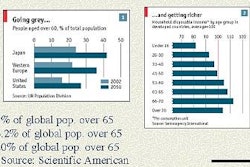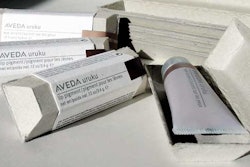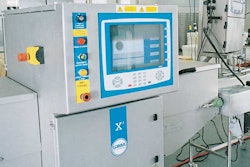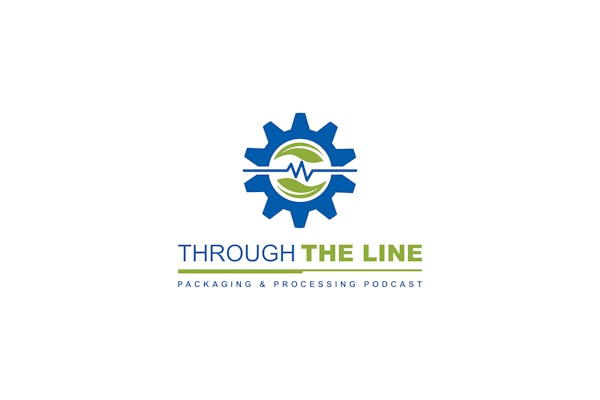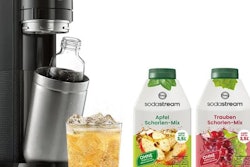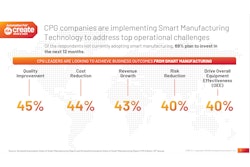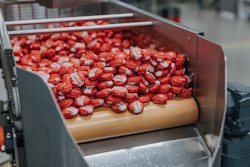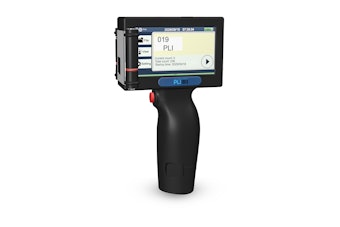During Packaging World’s visit to Gephar Food Srl, Cornaredo, Italy, outside Milan, we found that the doctors were in. Dr. Barbara Pacchetti, the scientific director of parent Sochim, along with research and development manager Dr. Veronica Minoggio, hosted us as part of an international press contingent touring pharmaceutical-related operations in the area (see packworld.com/go/c100). Pacchetti holds two doctorates, one in pharmacy and the other in pharmaceutical chemistry. Minoggio posseses a doctorate in food processing.
Gephar is one of three divisions of Milan, Italy-based Sochim Intl. S.p.A., which was founded in 1968. Gephar’s sales are forecast to be $4.5 million Euros in 2004. A contract packager, Gephar produces tablets, chewable tablets, coated tablets, granules, and powders from vitamins, minerals, and amino acids. Gephar packages 150 million tablets per year. Often referred to in the United States as nutraceuticals, the dietary and food supplements are referred to as “parapharmaceuticals” in Europe.
“There are different manufacturing guidelines for parapharmaceuticals than are used for pharmaceuticals,” explains Pacchetti, “but the extra controls we use compare to pharmaceutical operations.”
Gephar’s packaging formats include bottles and, primarily, blister packs. The company had subcontracted those functions until the installation of a new monolab blister packaging machine and cartoner in spring 2003.
Blister packaging is perfectly suited to regional preferences, according to Pacchetti. “Italians and Europeans in general are used to purchasing smaller quantities of parapharmaceuticals,” she points out. “Europeans are more into blisters than bottles.”
As a result, the company provides more products in blister packs than in bottles. Sales growth in blister packaging had been 20 to 30% until recently when the world economic slowdown dragged on sales, according to Pacchetti. Gephar expects growth to remain 10 to 20% yearly for the foreseeable future, she says.
Even with its Eurocentric focus, Gephar’s operations have an international bent. For example, Gephar sources its raw materials from the United States and Japan. The plant, which employs about 30, is set up with cells—isolation rooms—along the main hallway. One cell may house a tableting operation or blender. One of the larger cells houses the blister packaging operations, one of three packaging lines at the plant. The other two are bottling lines, one for smaller bottles, one for larger ones.
Along with cartoning, blister packaging had been contracted out before the machinery’s 2003 startup. The line comprises an integrated blister pack machine and cartoner; the packs make a right-angle conveyor turn from the blister packer to the cartoner.
The packaging operations were thermoforming and filling blister packs two-up at the rate of 2꼀 cartons/hr, each carton with three 10-count blister cards. Although the pace is not blistering, the machine’s methodical output is fast enough to handle Gephar’s needs.
Versatility Important
“It was more important for us to have a versatile, easy-to-change-over blister machine to package any format our customer wants,” observes Pacchetti.
From rollstock, the bottom material is thermoformed into the blister packs. The tablets are fed from a hopper into an enclosure within which a series of brushes ensure each compartment receives a tablet. The overflow tablets are then recycled within the blister packer.
The day of PW’s visit, the intermittent-motion blister packaging machine was producing a sample pack of five blisters for use by doctors. Formulated from botanicals, the tablets relieve symptoms of menopause.
“It’s a very good machine,” offers Minoggio.
Gephar’s blister materials are primarily monolayer polyvinyl chloride, Pacchetti says, but they also package using multilayer PVC. They are typically sealed with a foil lamination. The blisters are primarily 10- or 15- count packs, with two or three blisters inserted per carton.
For its bottled products, Pacchetti says they prefer to mimic the “good-looking bottles” found in the United States rather than what is typically available in Europe. Because shipping costs would be prohibitive, Pacchetti says they rely on Europe-based suppliers such as Superfos Pharma Pack to provide them with appealing “U.S.-quality-like” bottles.
One can expect the Italians to be fashionable, even when it comes to their packaging.



